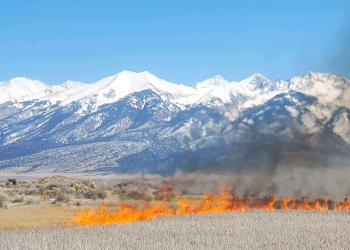Fire
Wildland fires can serve both beneficial and detrimental purposes, depending on the timing and location. When managed appropriately, these fires can offer numerous environmental advantages, including the reduction of dry grasses, brush, and trees that pose significant threats to lives, homes, and communities, as well as to natural and cultural resources.
To prevent wildland fires in vulnerable areas, several measures can be implemented:
Creating Firebreaks
Establishing firebreaks can help limit the spread of fires by clearing vegetation and creating barriers.
Controlled Burns
Conducting prescribed burns under controlled conditions can reduce excess fuel and minimize the risk of larger, uncontrolled wildfires.
Vegetation Management
Regularly thinning forests and clearing dry brush and grasses can lower the likelihood of fire ignition and spread.
Community Education
Raising awareness about fire safety practices among residents, such as responsible outdoor cooking and smoking, can help prevent accidental fires.
Building Codes and Regulations
Implementing and enforcing fire-resistant building codes and land-use regulations can reduce vulnerability in high-risk areas.
Fire Watch Programs
Establishing lookout stations and fire watch programs can enhance early detection and rapid response to potential fires.
Water Supply Management
Ensuring adequate water supplies for firefighting efforts, including maintaining access to water sources and establishing hydrants in strategic locations.
Public Access Restrictions
Temporarily restricting access to high-risk areas during extreme weather conditions can minimize human-caused ignitions.
Monitoring and Reporting
Utilizing technology for monitoring fire risks, such as satellite imagery and weather data, can help in early detection and prevention strategies.
Community Fire Plans
Developing and implementing community fire plans that involve local stakeholders in fire prevention efforts can foster collaboration and preparedness.
Fire Management on the Rio Grande NF

The Rio Grande National Forest's Fire Management program combines the elements of fire suppression, fire prevention and fuels management.
Fire Information

The Rio Grande National Forest strives to provide our visitors and communities with quality up-to-date fire information. This page provides information on fire restrictions, area closures related to active wildland fires and wildfire information.
Fire Prevention

Drown, Stir and Feel! That's the only way to put out your campfire! Learn more about fire prevention and restrictions and how to protect your home from that inevitable wildfire.



